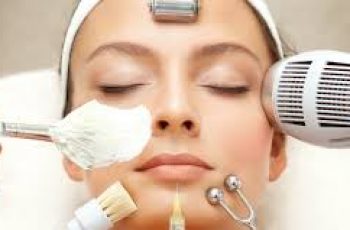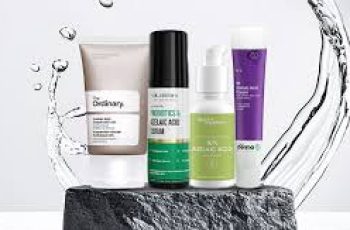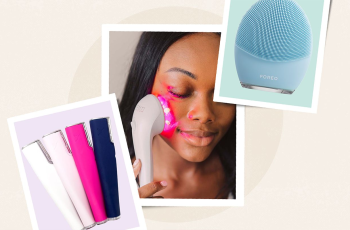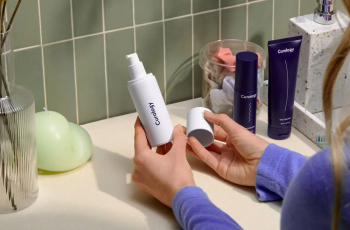
.webp)
.webp)
.webp)
Comedogenic Ingredients: What They Are and How to Avoid Them
.webp)
.webp)
If you struggle with acne or clogged pores, you’ve probably heard the term comedogenic. But what exactly does it mean—and why do some ingredients trigger breakouts while others don’t?
.webp)
.webp)
.webp)
This guide explains everything you need to know about comedogenic ingredients, how to identify them, and how to build a non-comedogenic skincare routine that truly works for your skin type.
.webp)
.webp)
What Does Comedogenic Mean?
.webp)
.webp)
.webp)
Comedogenic ingredients are substances that have the potential to clog pores. When pores become clogged with oil, dead skin cells, or debris, they can form comedones, including blackheads, whiteheads, and acne cysts.
.webp)
.webp)
On the other hand, non-comedogenic means that an ingredient or product does not clog pores or lead to breakouts.
.webp)
.webp)
.webp)
Knowing which ingredients are comedogenic can help you avoid them—especially if you have acne-prone or oily skin.
.webp)
.webp)
Why Pore-Clogging Ingredients Matter
.webp)
.webp)
.webp)
Pore-clogging (comedogenic) ingredients can:
.webp)
.webp)
Trap oil and bacteria in the skin, Cause closed comedones (whiteheads), Lead to inflammatory acne breakouts, Trigger skin texture issues, milia, and congestion
.webp)
.webp)
.webp)
Some of these ingredients are even found in products labeled as “acne treatments” or “non-comedogenic”—which is why reading ingredient labels is so important.
.webp)
.webp)
Common Comedogenic Ingredients to Watch Out For
.webp)
.webp)
.webp)
Below are some of the most common acne-triggering ingredients found in skincare, makeup, and even prescription treatments.
.webp)
.webp)
1. Beeswax
.webp)
.webp)
.webp)
Often found in balms and makeup, beeswax creates a thick film on the skin. This traps keratin and oil inside the pores, leading to breakouts.
.webp)
.webp)
☞ Found in: Lip balms, creams, concealers
.webp)
.webp)
.webp)
2. Cocoa Butter
.webp)
.webp)
Thick, rich, and soothing—yet highly comedogenic. Cocoa butter fills pores and blocks oxygen, which increases the risk of clogged pores.
.webp)
.webp)
.webp)
☞ Found in: Body butters, moisturizers, stretch mark creams
.webp)
.webp)
3. Dimethicone
.webp)
.webp)
.webp)
A silicone commonly used in primers and moisturizers. While not all forms cause acne, dimethicone can clog pores, especially if not cleansed properly.
.webp)
.webp)
☞ Tip: Wash off thoroughly at night if you use dimethicone-based products.
.webp)
.webp)
.webp)
4. Isopropyl Myristate & Similar Derivatives
.webp)
.webp)
Found in some acne medications, ironically. These compounds are highly comedogenic and can undo the effects of your treatment.
.webp)
.webp)
.webp)
☞ Avoid: Isopropyl isostearate, myristyl lactate
.webp)
.webp)
5. Coconut Oil
.webp)
.webp)
.webp)
Popular in DIY skincare, coconut oil clogs pores for most acne-prone individuals. However, lauric acid, a component of coconut oil, can be acne-fighting when isolated.
.webp)
.webp)
☞ Use caution with: Raw, unrefined coconut oil
.webp)
.webp)
.webp)
6. Red Pigments
.webp)
.webp)
Certain red dyes in makeup are known to clog pores.
.webp)
.webp)
.webp)
☞ Look out for: Xanthenes, monoazoanilines, indigoids in lipsticks and blushes
.webp)
.webp)
Why Some Ingredients Are Only Sometimes Comedogenic
.webp)
.webp)
.webp)
The reality is: comedogenicity depends on context. Here’s why a single ingredient might cause breakouts for one person, but not for another:
.webp)
.webp)
Your Baumann Skin Type, Skin barrier health, Climate: Humidity and temperature, Exposure to UV light, Formulation of the product (some are buffered or diluted)
.webp)
.webp)
.webp)
Interactions with other ingredients in your routine, How often and where it’s applied, Even your hormone levels, stress, or microbiome can affect how your skin reacts.
.webp)
.webp)
Ceteareth-20: A Special Case
.webp)
.webp)
.webp)
Ceteareth-20 is often found in skincare products like CeraVe. Alone, it’s not comedogenic. But when combined with cetearyl alcohol, the combo can clog pores.
.webp)
.webp)
☞ Bottom line: Avoid products that list both ingredients if you’re acne-prone.
.webp)
.webp)
.webp)
Ingredients That Become Comedogenic in Sunlight
.webp)
.webp)
Some ingredients are fine in the dark but become problematic when exposed to UV rays. These include:
.webp)
.webp)
.webp)
Human sebum, Sulfur, Cocoa butter, Squalene, Coal tar
.webp)
.webp)
☞ Tip: Always wash your face after sweating or being in the sun to remove oxidized oils.
.webp)
.webp)
.webp)
Comedogenic Rating Scale (0–5)
.webp)
.webp)
Ingredients are often ranked on a comedogenic scale:
.webp)
.webp)
.webp)
0: Will not clog pores
1: Very low risk
2: Low risk
3: Moderate risk
4: High risk
5: Very high risk
☞ Use this scale as a guide—not a rule. Your skin’s response matters most.
Historical Testing: How We Know
Early studies by Dr. Albert Kligman and Dr. James Fulton used rabbit ear models to test comedogenicity. Later, human trials added more data. But even today, no method is 100% accurate.
Still, these studies created the foundation for comedogenic ingredient checklists used today.
Natural ≠ Safe for Acne-Prone Skin
Just because an ingredient is natural doesn’t mean it won’t clog pores. In fact, many natural oils are comedogenic, including:
Coconut oil, Wheat germ oil, Peanut oil, Mink oil, Evening primrose oil
Examples of Non-Comedogenic Ingredients
Here are a few ingredients that are safe (non-comedogenic) and even beneficial for acne-prone skin:
Salicylic acid – exfoliates and unclogs pores
Hemp seed oil – moisturizes without clogging
Argan oil – anti-inflammatory and lightweight
Lauric acid extract – antibacterial and acne-fighting
Most Common Comedogenic Ingredients (Alphabetical List)
This partial alphabetical list includes well-known comedogenic ingredients to avoid. Always double-check your skincare labels!
A–B
Acetylated Lanolin Alcohol, Algin, Almond Oil, Arachidic Acid, Beeswax, BHA (Butylated Hydroxyanisole)
C
Cajeput Oil, Ceteareth-20 (with cetearyl alcohol = comedogenic), Cetearyl Alcohol, Cetyl Alcohol, Cocoa Butter, Coconut Oil, Collagen, Corn Oil, Cottonseed Oil
D–F
D&C Red Pigments, Decyl Oleate, Dimethicone (varies by form), Ethoxylated Lanolin, Evening Primrose Oil, Fluorans
G–L
Glyceryl-3-Diisostearate, Hydrogenated Vegetable Oil, Indigoids, Isopropyl Myristate, Isostearyl Isostearate, Lanolin and derivatives, Laureth 4 & 23
M–R
Myristic Acid, Myristyl Lactate, Oleyl Alcohol, Oxybenzone, Peanut Oil, Pumpkin Seed Oil, Red Algae
S–Z
Squalene (in sun-exposed skin), Shark Liver Oil, Soybean Oil, Stearyl Heptanoate, Sulfated Castor Oil, Vitamin A Palmitate, Wheat Germ Oil, Xanthenes, Comedogenic Oils to Avoid
Comedogenic:
Coconut oil, Wheat germ oil, Peanut oil, Evening primrose oil, Shark liver oil, Sulfated jojoba oil
Slightly Comedogenic:
Sweet almond oil, Flaxseed oil, Linseed oil
What Skincare Brand is Non-Comedogenic?
Rather than relying on brand claims, it’s better to:
Check ingredient lists, Take a skin type quiz
Look for third-party testing or dermatologist-approved routines
Some brands, like VMV Hypoallergenics, use lab-tested, non-comedogenic formulations and may be a good starting point.
How to Build a Non-Comedogenic Skincare Routine
Know Your Skin Type
Use a medically validated skin typing quiz to determine your Baumann Skin Type®.
Read Ingredient Lists
Use a comedogenic checker or this guide to screen for problematic ingredients.
Patch Test New Products
Test on a small area before applying all over your face.
Adjust Seasonally
Some ingredients may work in winter but break you out in the summer.
Don’t Rely on Marketing Claims
“Non-comedogenic” is not regulated by the FDA and can be misleading.
Final Thoughts: Comedogenic Ingredients and Your Skin
Knowing which ingredients are comedogenic gives you the power to avoid unnecessary breakouts and inflammation. But remember—comedogenicity is not absolute.
Skin type, product formulation, and usage all play a role.
If you’re consistently dealing with breakouts, the best first step is to take a professional skin type quiz, get matched to your Baumann Skin Type®, and create a routine that truly works for you.



